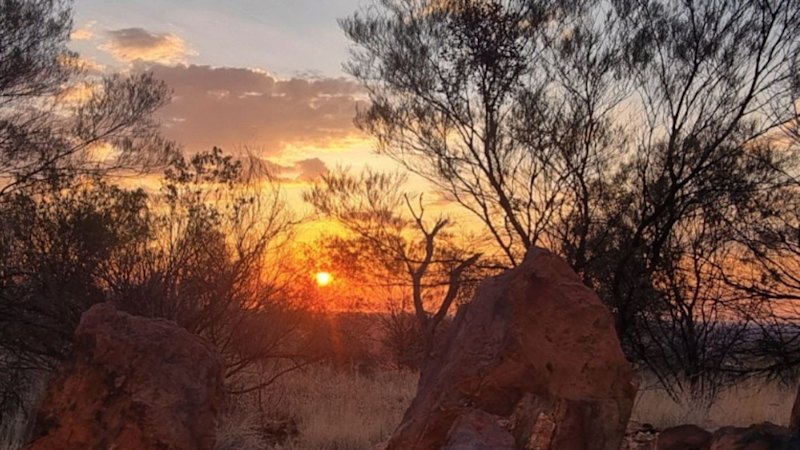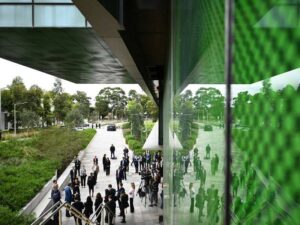
Litchfield Minerals has launched a new fixed loop electromagnetic (FLEM) survey at its Oonagalabi copper-zinc project in the Northern Territory, following a successful drilling program and an induced polarisation (IP) survey. This initiative aims to provide deeper insights into the promising VT1 conductor, enhancing the company’s understanding of the prospect’s true strike, width, and depth. The survey marks the beginning of a new phase of geophysical exploration, positioning Litchfield for a significant drilling campaign anticipated in early 2026.
The VT1 target gained attention in August when a helicopter-borne VTEM survey detected a potential cluster of late-time anomalies, suggesting a robust mineralised source beneath the surface. The excitement surrounding VT1 intensified in October when a drill hole revealed a remarkable 104-metre copper-sulphide intercept from surface, with high-grade segments exceeding two percent copper equivalent. This discovery propelled Litchfield’s share price by 300 percent to $0.745.
Managing Director Matthew Pustahya expressed optimism about the company’s trajectory, stating, “We look forward to continuing this momentum into year-end, ensuring we have strong datasets to enter 2026 with confidence.”
The standout results originated from Hole 10, which, when analysed with a handheld X-ray fluorescence (pXRF) device, indicated a solid copper equivalent grade of 1.37 percent across its entire length. This included 0.92 percent copper, 1.59 percent zinc, and 0.08 percent lead. Follow-up assay results corroborated these findings, revealing a combined copper-zinc intersect over four mineralised zones totalling 91 metres, with grades of 0.9 percent copper, 1.3 percent zinc, 0.1 percent lead, 7 grams per tonne (g/t) silver, and 0.1 g/t gold from a depth of 8 metres.
Further reinforcing the significance of the discovery, earlier rock chip testing on a gossanous outcrop returned 0.6 percent copper, 0.6 g/t gold, 14 g/t silver, and 7 parts per million (ppm) tellurium. The presence of tellurium, often associated with gold-rich systems, alongside copper and silver, raises the prospect of a larger orebody, potentially indicating an iron-oxide copper-gold system or a skarn at depth.
A subsequent hole drilled at VT1 revealed 46 metres of light disseminated copper-iron sulphides from 69 metres depth. Although this hole did not intersect the main conductive body, a down-hole electromagnetic (DHEM) survey unveiled six tightly folded plates extending over 400 metres, implying a much larger, highly fertile system.
New 3D magnetic inversion mapping has started to clarify the broader geological picture at Oonagalabi. This mapping suggests the presence of a potentially large intrusion-related sulphide system situated at depth, with disseminated mineralisation formed by fluids migrating upward from a concealed intrusive structure below. The VT1 target is strategically located about 5.4 kilometers southwest of the VT2 conductor, another priority target for Litchfield.
As the work at VT1 progresses, attention will shift to VT2 for further ground surveying, which will investigate its deeper regions following previous VTEM and EM studies. In mid-October, Hole 11 was drilled at VT2 and encountered an impressive 168-metre section of patchy sulphides, including two significant intervals carrying semi-massive to massive sulphides. Assay results from this hole are pending.
If weather conditions permit before the onset of the wet season, the Bomb-Diggity cluster, located at a strategic point in the fold, is next in line for surveying. This target area shows promising indicators, including IP chargeability, magnetic highs, gravity responses, and multiple VTEM conductors, providing ample opportunities for further exploration.
Contractor Bullion Drilling has recently completed a five-hole program, with each hole averaging 300 metres in depth. The main objective was to gather structural data across the Oonagalabi Main Zone, test magnetic features along the central corridor and at Bomb-Diggity, and re-drill the VT2 conductor from a more advantageous angle.
Matthew Pustahya commented on the company’s recent activities, stating, “Since the last drill campaign, we have completed IP surveys, drilled a further five holes, and commenced a ground EM program across multiple high-priority targets, to refine our drilling targets. We look forward to continuing this momentum into year-end, ensuring we have strong datasets to enter 2026 with confidence, ready for further drilling early next year.”
With ongoing geophysical surveys and multiple sulphide discoveries, Litchfield Minerals is positioning itself as a key player in the Northern Territory’s copper exploration landscape. The company is gathering a robust pipeline of targets, accumulating valuable technical data, and developing a geological narrative that appears to grow more compelling each week. If the upcoming round of EM and drilling yields results consistent with current findings, 2026 could be a pivotal year for the Oonagalabi project.







